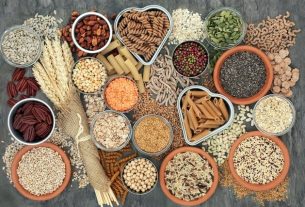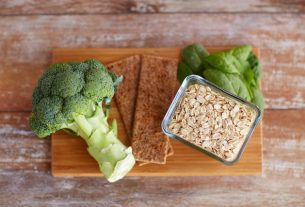Baroa potatoes, also known as cassava or parsley potatoes, are a tuber that is a source of carbohydrates and fiber, helping to produce energy in cells and helping the intestines function.
This potato is also rich in vitamins from complex B and C, as well as minerals such as calcium, iron and phosphorus and, due to the fact that it is rich in nutrients, it provides several health benefits.
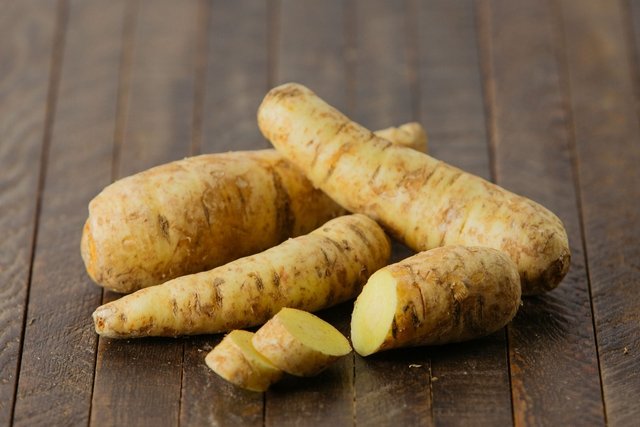
Benefits of baroa potatoes
This tuber can be included in both diets to gain muscle mass and lose weight, and it is important to vary the amount consumed and the accompaniments of the dish. The main benefits of baroa potatoes are:
- Provide energy to the bodyas it is an excellent source of carbohydrates;
- Fight constipationas it is rich in fiber, improving intestinal health;
- Improve the immune systemas it is rich in zinc, vitamin C and B complex vitamins, nutrients that are essential for promoting the body’s defense;
- Prevent premature aging and improve skin healthas it contains a high amount of vitamin C, a powerful antioxidant that promotes skin healing and collagen production;
- Improve heart health, as it is rich in vitamin B3, which helps reduce cholesterol and triglyceride levels, reducing the risk of heart disease. Furthermore, it also helps to relax blood vessels and improve circulation, as it has minerals such as magnesium and potassium;
- Maintain bone and teeth healthas it is rich in phosphorus and calcium, essential nutrients to prevent diseases such as osteoporosis and osteopenia;
- Promote muscle growth, as it is rich in carbohydrates, which guarantees energy to carry out training. Furthermore, it is rich in calcium and magnesium, minerals that improve muscle strength and contraction, promoting hypertrophy.
Baroa potatoes have fewer calories than sweet potatoes and a similar amount of fiber, which makes them a great option to balance your diet menu for weight loss or muscle mass gain.
Nutritional information
The following table contains nutritional information for 100 grams of baroa potatoes:
How to use baroa potatoes to lose weight
To lose weight, you should consume a maximum of 80 to 100 g of baroa potatoes at lunch or dinner, preferably cooked or roasted in the oven, and without adding other carbohydrate sources such as rice, pasta or farofa. This means the meal will be low in carbohydrates, helping with weight loss.
In addition to the cassava, you should add a good portion of meat, chicken or fish, which is the dish’s protein source, and a vegetable salad with olive oil, which will promote increased satiety.
How to use baroa potatoes to gain muscle mass
People who want to gain muscle mass and gain weight can consume larger quantities of baroa potatoes, in addition to being able to add other sources of carbohydrates to the same meal, such as rice, pasta and farofa.
The meal should also contain a good amount of protein, which are meat, chicken and fish, and salad with olive oil. Pre-workout, you can use baroa potatoes with fried eggs or cheese, accompanied by 1 fruit or natural yogurt, for example.
Preparation methods and recipes
Mandioquinha can be consumed boiled, fried, roasted in the oven or in the form of puree, in addition to being added to soups and fish or meat stews. When cooking it, you should keep the skin on and only remove it after cooking, as this way you don’t lose as many minerals and vitamins in the cooking water.
French fries should be avoided in weight loss diets, with oven-baked potatoes being a better option. The puree option should also be used more by those who want to gain weight, as the addition of milk and butter when preparing the puree makes the meal more caloric.
Some recipes with baroa potatoes are:
1. Baroa potato soup
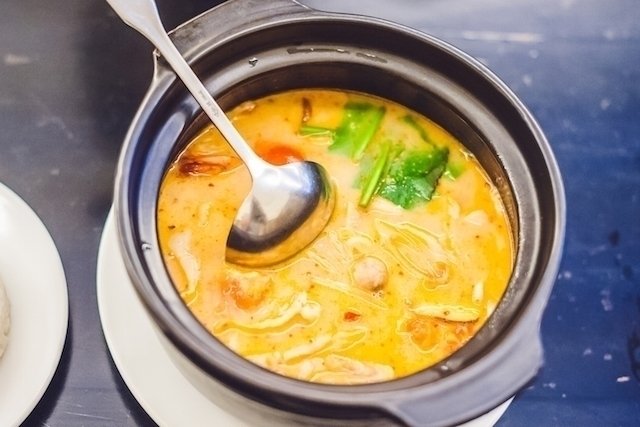
Ingredients:
- 500 g kg of baroa potatoes;
- 500 g of carrots;
- 1 medium onion;
- 3 cloves of garlic;
- 120 ml of olive oil;
- 500 g diced chicken breast;
- 1 liter of water;
- 1 tablespoon of olive oil;
- salt, pepper and green scent to taste.
Preparation mode:
In a pressure cooker, sauté the garlic and onion in olive oil. When golden, add the chicken, carrot and cassava, and sauté again. Add the salt, pepper and green chillies, and cook for approximately 10 minutes after coming to pressure.
If you want the soup in cream form, cook the chicken separately and grind the cassava stew with carrots before mixing with the chicken.
2. Baroa potato hideaway
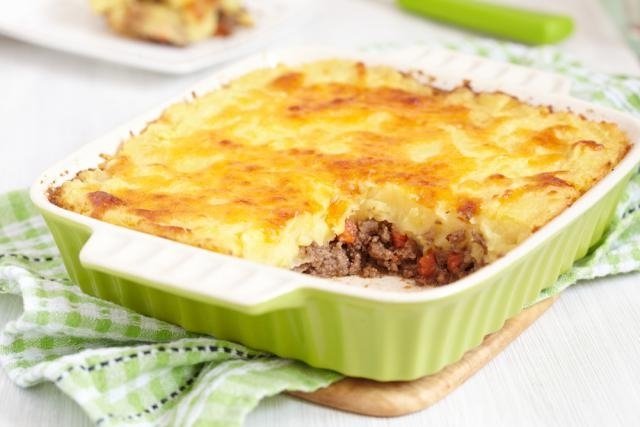
Puree ingredients:
- 1/2 kg of cooked baroa potatoes;
- 1/2 kg of boiled potatoes;
- 1/2 medium onion in cubes;
- 2 tablespoons of butter;
- 200 g of cream;
- 1 cup of milk tea;
- Salt and black pepper to taste;
- 50 g of grated parmesan for sprinkling.
Filling Ingredients:
- 3 tablespoons of olive oil;
- 3 crushed or chopped garlic cloves;
- 1/2 kg of ground meat;
- 5 chopped tomatoes;
- 1/2 cup of tomato sauce;
- Salt and black pepper to taste;
- 4 tablespoons of chopped parsley.
Preparation mode
For the puree, mash the cassava and potatoes while still hot with the juicer. Sauté the onion lightly in butter, add the potatoes and the other ingredients, letting the mixture cook for about 3 to 5 minutes.
For the filling, sauté the garlic in olive oil and add the meat and sauté until dry and loose. Add the tomatoes and tomato sauce and season with salt and pepper to taste, cooking until a thicker sauce forms. Add the salt and parsley.
To assemble, grease a glass dish with butter and spread half of the puree, then add the filling and, finally, cover with the other half of the puree. Sprinkle the cheese on top and bake in a preheated oven at 200 ºC for around 20 minutes.
Also discover the benefits of sweet potatoes.
Bibliography
- ZEMAN Miroslav; MAREK Vecka et al. Niacin in the Treatment of Hyperlipidemias in Light of New Clinical Trials: Has Niacin Lost its Place?. Medical Science Monitor. 21. 2156-2162, 2015
- STATE UNIVERSITY OF CAMPINAS – UNICAMP. Brazilian Food Composition Table.. 2011. Available at: <http://www.nepa.unicamp.br/taco/contar/taco_4_edicao_ampliada_e_revisada.pdf?arquivo=taco_4_versao_ampliada_e_revisada.pdf>. Accessed on April 14, 2020
- Yenddy STREET; DÁVILA Marta et al. White carrot (Arracacia xhanthorrhiza bancr) potential phytopharmaceutical: mini review . Journal of Clinical Research. 59. 1; 109-111, 2018

Sign up for our newsletter and stay up to date with exclusive news
that can transform your routine!
Warning: Undefined array key "title" in /home/storelat/public_html/wp-content/plugins/link-whisper-premium/templates/frontend/related-posts.php on line 12
Warning: Undefined array key "title_tag" in /home/storelat/public_html/wp-content/plugins/link-whisper-premium/templates/frontend/related-posts.php on line 13


